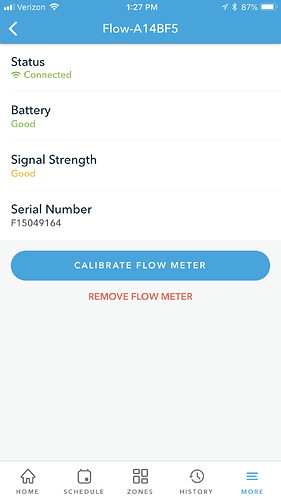Some progress to report:
I found a 3rd signal strength state reported in the app - Good!:
How did I achieve this??
I placed the wire coil inside a pringles can and tilted it towards the controller as best I could. ![]() Props to you @DLane!
Props to you @DLane!
@Brad - I ran a calibration at 1:29 PM ET and it completed without any dropouts. Could you check and see that the SNR you see on your end matches what I’m seeing?
Still chuckling, but happy to hear any critique on my technique. I’ll probably head later with some electrical tape and scissors to rig up something a little more durable.

